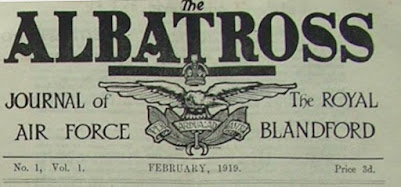While it may not be unusual for members of the Rail & Maritime Trade Union to take industrial action, it is much more unusual for members of a British military base to do so. Yet, that is what happened in Blandford Camp at the end of World War I.
Today, the military base is associated with the army yet in early 1919 it was a large but only recently opened Royal Air Force (RAF) establishment. Recruits to the RAF were received there for initial training and the RAF Records, Equipment and Personnel Depot had been relocated to Blandford Camp the previous year. Having only been opened as an RAF base in 1918, Blandford Camp was not a happy place. There were accommodation problems due to construction delays caused by a shortage of building workers. The War Cabinet had flatly turned down an Air Ministry plea to improve construction worker pay rates to aid recruitment. Such delays resulted in widespread overcrowding in tents particularly unsuited to bad weather.
Blandford’s RAF Camp gained a reputation as a ‘Washout’s Camp’ as it was reckoned that
some individuals deliberately failed their training to try to get a soft
posting. To prevent this, a bullying culture developed. Also, many young and
apparently fit recruits died as a result of a pandemic known as ‘Spanish Flu.’ It was suggested that sick
men had to lie on dirty straw mats in unsuitable and unhealthy accommodation
and there were insufficient doctors and nurses. Some flu sufferers became
depressed and there were several suicides in a small wood which became known as
‘Suicides Wood.’
Matters came to a head in January 1919 when a thousand RAF servicemen left their work at Blandford Camp and refused to return until their grievances had been settled. These include:
Claim for better working and living conditions.
Victimisation of a flight sergeant sent to Ireland.
Fairer treatment of injured service personnel.
Transfer of the Records Unit to a less isolated location.
With questions also being raised in the House of Commons on
waste, bullying and inefficiencies in Blandford’s RAF Camp, it is perhaps no
surprise that the base was soon closed.
(Illustration: Brigadier-General F.G. Willock D.S.O. Commanding RAF Blandford - Blandford RAF Journal 1919)



This event was part of a wave of strikes and mutinies by soldiers, sailors and airmen in January 1919, involving up to 200,000 personnel. The main demands were immediate demobilisation, no more drilling/soldiering and refusals to fight in the Russian campaign against the revolutionaries.
ReplyDelete